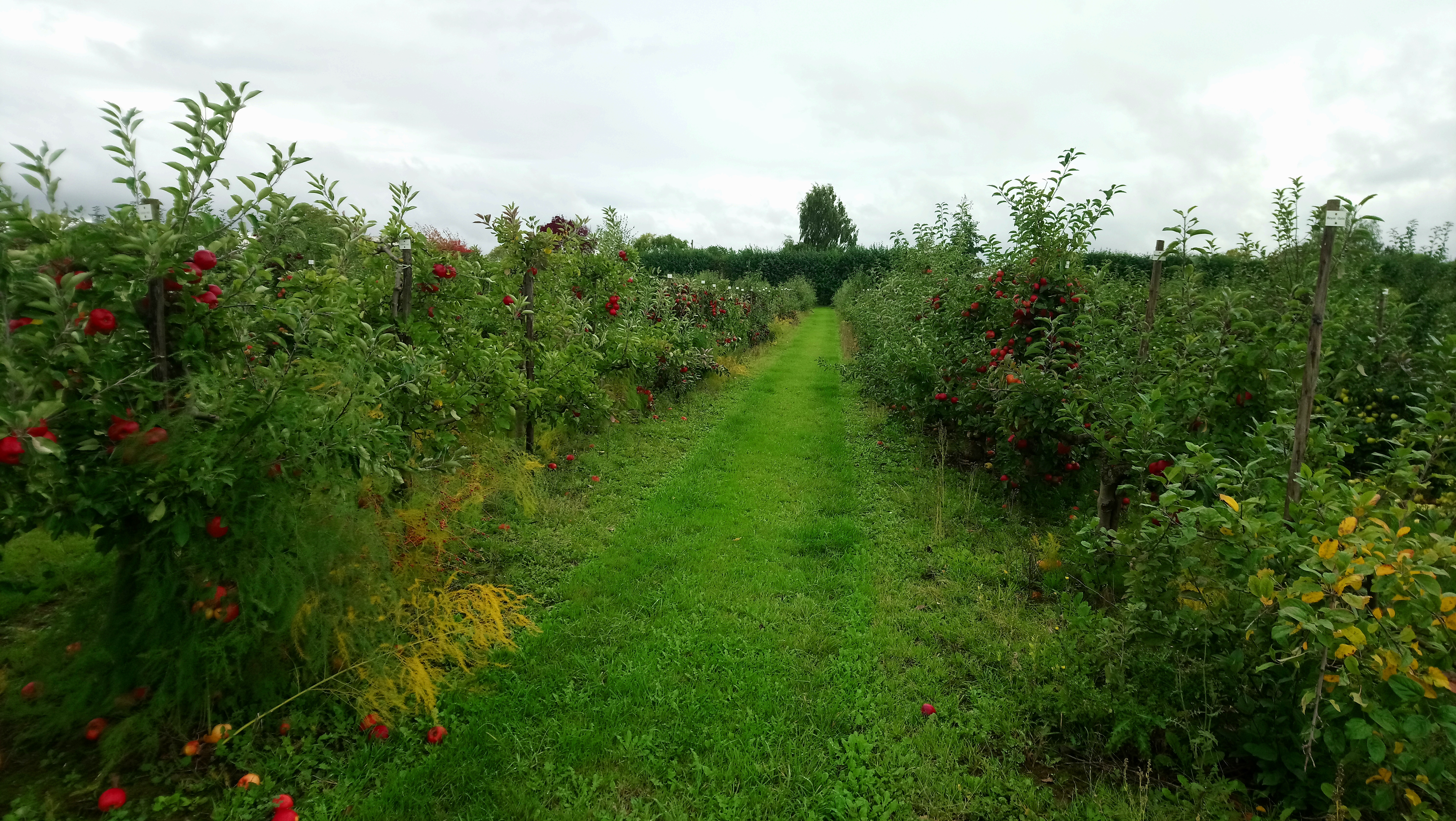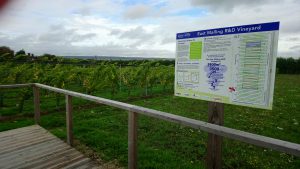
February 6, 2020, by Rob Ounsworth
A glimpse into the future of UK fruit production for PhD researcher
Blog by Kellie Smith, a University of Nottingham PhD student researching agriculture and food security
I am a new PhD student on a Biotech and Biosciences Research Council (BBSRC)-funded doctoral training programme, which includes a rotation year and the chance to do three mini projects in different lab groups before choosing your main focus.
As part of our introductory programme we visit companies and institutions who work in partnership with the University, offering us networking opportunities and the chance to work in different locations during our rotation mini projects.
One of these fabulous locations is the National Institute of Agricultural Botany and East Malling Research (NIAB-EMR) in Kent. Perfectly set in acres of apples, pears, cherry and plum orchards, the horticultural research centre has been established for many years. For example, the most widely used apple tree rootstock supplying 90% of West Europe’s apples, was developed at EMR!
We were taken underground into the Rhizolab (rhizo means ‘roots’), a tunnel facility with windows allowing you to observe normally hidden soil layers and the expansive root development of apple trees and grasses. This seemed to be the perfect cave hideaway for any biologist interested in soil, root development, insect and microorganism interactions!
We also had a tour through the orchards, which were pleasing to all the senses. You could smell the sweet, fresh scent of apples wafting through the air. During the tour we were encouraged to pick and eat as many of the different apples as we liked. You could really get a sense of the aims of NIAB-EMR research to optimise flavours, textures, aromas, bites and after-tastes. We were even lucky enough to try and judge a new variety before it was made commercially available!
We were shown the new grapevines, funded by UK wine-makers, which have been added this year. The UK wine industry is growing and NIAB-EMR is involved in researching factors such as acidity and sugar content of grapes to optimise flavours. I am excited to see how the UK wine market benefits from this research.
NIAB-EMR’s monitoring stations collect weather data and makes predictions for when populations of pests and pathogens might be on the increase, which is used to reduce risks of crop loss. For example, the fungus Botrytis which affects berries and grapes, may increase in periods of high humidity so crops can be protected at early stages using these new technologies.
Research applied to solve real-world problems in food security
As well as the tour of the site, we also had two days of scientific talks from PhD researchers and early career researchers at NIAB-EMR who all have funding from agricultural and industrial partners. This means that their research is very applied and is used to solve real-world problems in food security. Some areas of research which interested me most from NIAB-EMR, was how to develop apple and cherry resistance to problematic bacterial and fungal diseases, how to optimise the tastes of beer from hops and how to use biocontrol (plant extracts, helpful bacteria and fungi to kill pest, pathogens or insects which target crops) as an alternative to spray chemicals.
The researchers at NIAB-EMR were from across world, from Italy to Hungary to Australia, and each had been drawn to the need to understand how to optimise fruit crops. Many of the researchers said that working at NIAB-EMR allowed them to do the research they loved, both lab and field work combined can be hard to find at a University setting and partnership companies can often do this much better! Universities also don’t often have the facilities to offer you lots of free organically grown fruit during summer so for some, this would also be considered a big plus!
Many working in agricultural research are working on cereal crops like rice and wheat but fewer work on fruit crops There is a lot of work still to do to understand fruit crop production, the genetics of these plants, the diseases that impact on yields and exploring the post-harvest processing of crops to make new products. Research with trees is challenging – we are talking about decades to even start producing any fruit – and breeding trees takes even longer and many generations to see whether your trait of interest has come through.
I look forward to seeing more of the research outputs from NIAB-EMR and how this may shape the UK’s fruit production.
No comments yet, fill out a comment to be the first


Leave a Reply